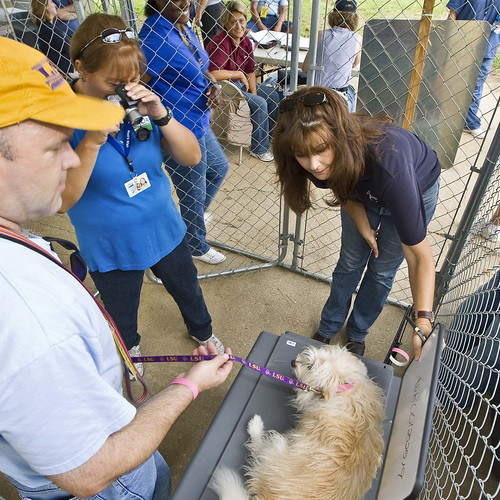
Let’s face it—there’s nothing quite as frightening as when a natural disaster strikes. Even fictional movies about natural disasters leave you on the edge of your chair. Whether in the movies or real life, the important lesson is—planning ahead can save…you or your family’s…life.
It’s National Preparedness Month. USDA’s Animal and Plant Health Inspection Service (APHIS) wants to remind you to take steps that not only protect your family members but your pets in the event of an emergency situation. The same planning that goes into making your human family safe also should be extended to your furry, scaly, finned or feathered family too. Contact your local emergency management agency for specific information about your area before disaster strikes. They know the history of the types of emergencies typically affecting your area, and also will have critical information about local resources, such as where you can evacuate with your pet. These few simple steps provided by the Federal Emergency Management Agency (FEMA) will help you prepare for your pet’s safety during a disaster. And your local emergency management organization can help you with the points marked below with a * star.
- PREPARE a pet emergency supply kit
- Three day supply of food and water *
- Copy of medical and vaccination records in a waterproof container
- Extra supply of medications your pet is currently taking
- Extra leashes, collars and ID tags
- A sturdy, safe and comfortable crate/carrier should you need to evacuate with your pet *
- Paper towels, plastic bags and disinfectant for waste clean-up
- A picture of you and your pet should you get separated
- Familiar items such as favorite toys, treats and bedding
- PLAN what you will do in an emergency
- If you must evacuate, take your pets with you, if practical
- Secure your destination ahead of time *
- Plan with your neighbors, friends or relatives to ensure someone can care for your pets in the event you are unable to do so
- Get the names of veterinarians or veterinary hospitals in other cities you are likely to seek temporary shelter *
- Make a list of contact information and addresses of area animal control agencies including the Humane Society, or SPCA, and emergency veterinary hospitals *
- STAY INFORMED know about types of emergencies
- Know the types of emergencies that are most likely to occur in your area *
- Know what emergency plans have been established by your state and local government *
While we hope a disaster never strikes, careful preparation for your family and pets, can help alleviate even the worst results of a disaster. To learn more about APHIS’ role in the national plan, visit www.aphis.usda.gov, or visit FEMA’s website at http://www.ready.gov/sites/default/files/documents/files/pets_brochure.pdf.

